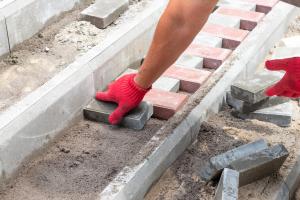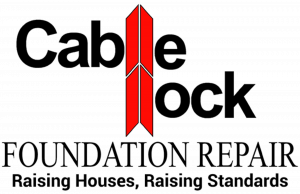Why Foundation Issues Are More Common in Older Homes
As homes age, the materials used in the foundation begin to wear, settle, and, in some cases, deteriorate.”
METAIRIE, LA, UNITED STATES, February 13, 2025 /EINPresswire.com/ -- For homeowners in Louisiana, foundation issues are a common concern, especially when dealing with older homes. Over time, homes settle, shift, and endure environmental changes that can place stress on the foundation. As buildings age, they become more susceptible to a range of foundation-related problems that can affect the stability and safety of the home. Understanding why foundation issues are more common in older homes and how they can be addressed is essential for maintaining a safe living environment.— Travis Hartley
Travis Hartley2, Project Manager at Cable Lock Foundation Repair1, highlights the impact of age on the structural integrity of homes. “As homes age, the materials used in the foundation begin to wear, settle, and, in some cases, deteriorate. This can result in shifting or cracking, which over time may cause significant problems for the entire structure,” says Hartley.
The Natural Settling Process in Older Homes
One of the most common reasons for foundation issues in older homes is the natural settling process. As a building settles into the ground, the weight of the structure gradually shifts downward. This is particularly true for older homes that were built with different construction techniques and materials than those used in modern homes. Over time, the foundation may begin to shift and crack as the soil beneath the home changes, causing uneven settlement.
In newer homes, the settling process is often carefully controlled with modern techniques and materials designed to prevent excessive shifting. However, in older homes, the foundation may not have been built to withstand these long-term effects of settling. As a result, foundation problems such as uneven floors, cracked walls, and doors that fail to close properly are more commonly seen in homes that have been standing for decades.
The Role of Soil and Moisture
The soil beneath a home plays a significant role in the health of the foundation. Louisiana’s soil can vary greatly depending on the region, and in areas with expansive clay soils, the risk of foundation problems is even higher. Expansive clay soil is prone to significant expansion and contraction depending on moisture levels. When the soil absorbs too much moisture, it expands, putting pressure on the foundation. Conversely, when the soil dries out, it contracts, leaving gaps beneath the foundation.
Older homes, particularly those built in areas with expansive clay soil, are more likely to experience foundation damage due to these soil changes. The movement of the soil can cause cracks in the foundation, which may lead to structural issues that can affect the overall stability of the home. Over time, these shifts and movements can lead to significant foundation problems that require professional attention to repair.
Deterioration of Foundation Materials
Another factor contributing to foundation issues in older homes is the natural deterioration of building materials. Many older homes were constructed with materials that are no longer used today due to their tendency to degrade over time. For example, some older foundations were made with unreinforced concrete or mortar, both of which are prone to cracking and erosion as they age. Over time, exposure to moisture, humidity, and temperature fluctuations can cause these materials to break down and compromise the stability of the foundation.
In addition to concrete and mortar deterioration, older homes may also have foundation systems that were not designed to handle the structural loads that modern homes require. For example, older homes may have foundations that were built with inadequate drainage systems, which can lead to water pooling around the foundation and increasing the risk of damage.
“Deterioration of foundation materials is often an unseen issue in older homes,” explains Hartley. “When these materials begin to break down, it can lead to cracks, uneven settling, and eventually major structural issues that need to be addressed.”
Lack of Modern Foundation Techniques
In the past, construction practices and materials did not always account for the long-term stability of the foundation. In modern construction, techniques such as reinforcing the foundation with steel or using advanced concrete mixes are standard practice. These methods ensure that foundations can withstand the forces of nature and the stresses placed on them by the weight of the home.
However, many older homes were built before these modern techniques were developed, and as a result, their foundations were often constructed using less durable methods. This means that over time, as the structure settles and shifts, the foundation may not be able to withstand the stress, leading to cracks, uneven floors, or sagging walls.
Additionally, older homes may not have been built with adequate attention to drainage or soil stabilization, which increases the likelihood of foundation issues over time. The absence of modern foundation techniques means that older homes are at a higher risk of developing problems that can affect the entire structure.
How to Address Foundation Issues in Older Homes
While foundation issues are more common in older homes, the good news is that most problems can be fixed with the right approach. Regular inspections from a professional foundation repair company can help homeowners identify potential issues early and take steps to address them before they cause significant damage.
Travis Hartley recommends early intervention. “It’s important for homeowners of older homes to have their foundations inspected regularly,” Hartley says. “Small cracks or uneven floors may seem like a minor issue, but they can quickly escalate into more serious problems. The sooner foundation issues are addressed, the easier and more affordable the repair process will be.”
For homeowners dealing with foundation issues in older homes, there are various repair methods available, depending on the severity of the problem. These methods may include underpinning, piering, or installing new drainage systems to alleviate soil pressure. In some cases, foundation stabilization techniques may be used to address moisture-related problems in the soil, preventing further damage to the foundation.
Conclusion
Foundation issues are more common in older homes due to a combination of factors, including natural settling, soil conditions, deterioration of materials, and outdated construction methods. Homeowners of older properties should be aware of these risks and take proactive measures to address potential problems early. Regular inspections, testing, and professional repair services are essential for maintaining the integrity and safety of the home.
With the right knowledge and the help of experts, homeowners can mitigate the risks of foundation damage and ensure that their homes remain stable and safe for years to come.
Morgan Thomas
Rhino Digital, LLC
+1 504-875-5036
email us here
Visit us on social media:
Facebook
1 https://cablelockfoundation.com/
2 https://cablelockfoundation.com/contact/


